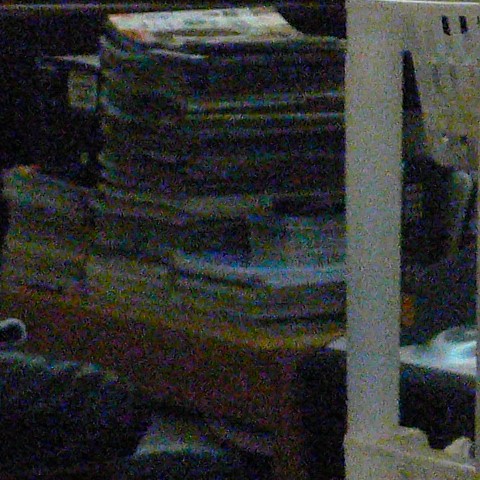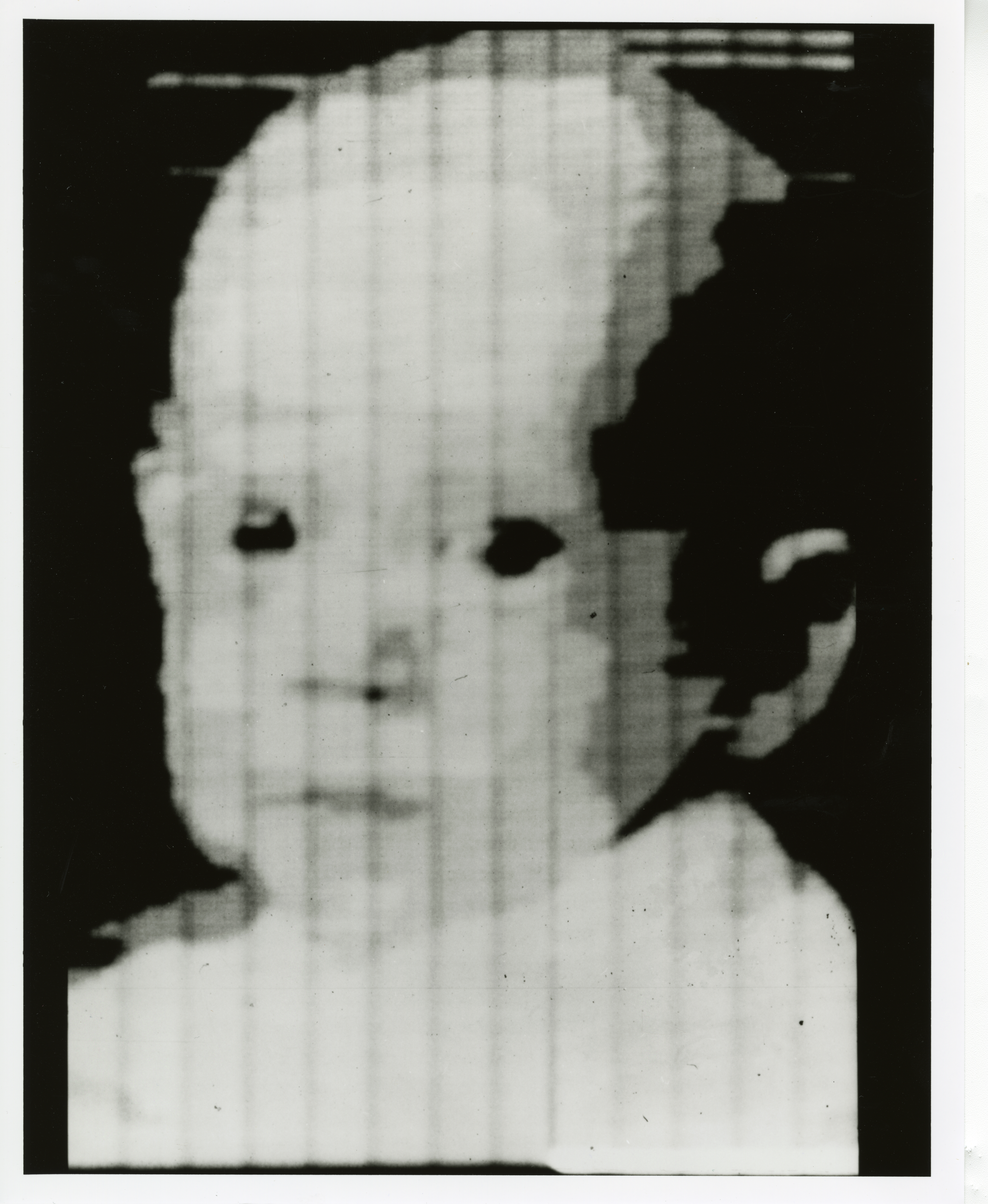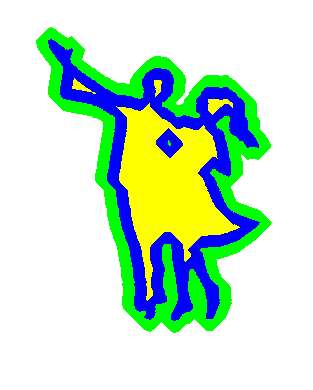|
Salt-and-pepper Noise
Salt-and-pepper noise, also known as impulse noise, is a form of noise sometimes seen on digital images. This noise can be caused by sharp and sudden disturbances in the image signal. It presents itself as sparsely occurring white and black pixels. An effective noise reduction method for this type of noise is a median filter or a morphological filter. For reducing either salt noise or pepper noise, but not both, a contraharmonic mean filter can be effective. See also * Defective pixel A defective pixel is a pixel on a liquid crystal display (LCD) that is not functioning properly. The ISO standard ISO 13406-2 distinguishes between three different types of defective pixels, while hardware companies tend to have further distingu ... References Noise (graphics) Digital photography Image noise reduction techniques {{Photo-stub ... [...More Info...] [...Related Items...] OR: [Wikipedia] [Google] [Baidu] |
Noise Salt And Pepper
Noise is unwanted sound considered unpleasant, loud or disruptive to hearing. From a physics standpoint, there is no distinction between noise and desired sound, as both are vibrations through a medium, such as air or water. The difference arises when the brain receives and perceives a sound. Acoustic noise is any sound in the acoustic domain, either deliberate (e.g., music or speech) or unintended. In contrast, Noise (electronics), noise in electronics may not be audible to the human ear and may require instruments for detection. In audio engineering, noise can refer to the unwanted residual electronic noise signal that gives rise to acoustic noise heard as a Hiss (electromagnetic), hiss. This signal noise is commonly measured using A-weighting or ITU-R 468 noise weighting, ITU-R 468 weighting. In experimental sciences, noise can refer to any random fluctuations of data that hinders perception of a signal. Measurement Sound is measured based on the amplitude and frequency ... [...More Info...] [...Related Items...] OR: [Wikipedia] [Google] [Baidu] |
Image Noise
Image noise is random variation of brightness or color information in images, and is usually an aspect of electronic noise. It can be produced by the image sensor and circuitry of a Image scanner, scanner or digital camera. Image noise can also originate in film grain and in the unavoidable shot noise of an ideal photon detector. Image noise is an undesirable by-product of image capture that obscures the desired information. Typically the term “image noise” is used to refer to noise in 2D images, not 3D images. The original meaning of "noise" was "unwanted signal"; Noise (radio), unwanted electrical fluctuations in signals received by AM radios caused audible acoustic noise ("static"). By analogy, unwanted electrical fluctuations are also called "noise". Image noise can range from almost imperceptible specks on a digital photograph taken in good light, to Optical astronomy, optical and Radioastronomy, radioastronomical images that are almost entirely noise, from which a sma ... [...More Info...] [...Related Items...] OR: [Wikipedia] [Google] [Baidu] |
Digital Image
A digital image is an image composed of picture elements, also known as ''pixels'', each with ''finite'', '' discrete quantities'' of numeric representation for its intensity or gray level that is an output from its two-dimensional functions fed as input by its spatial coordinates denoted with ''x'', ''y'' on the x-axis and y-axis, respectively. Depending on whether the image resolution is fixed, it may be of vector or raster type. Raster Raster images have a finite set of digital values, called ''picture elements'' or pixels. The digital image contains a fixed number of rows and columns of pixels. Pixels are the smallest individual element in an image, holding antiquated values that represent the brightness of a given color at any specific point. Typically, the pixels are stored in computer memory as a raster image or raster map, a two-dimensional array of small integers. These values are often transmitted or stored in a compressed form. Raster images can be created b ... [...More Info...] [...Related Items...] OR: [Wikipedia] [Google] [Baidu] |
Pixel
In digital imaging, a pixel (abbreviated px), pel, or picture element is the smallest addressable element in a raster image, or the smallest point in an all points addressable display device. In most digital display devices, pixels are the smallest element that can be manipulated through software. Each pixel is a sample of an original image; more samples typically provide more accurate representations of the original. The intensity of each pixel is variable. In color imaging systems, a color is typically represented by three or four component intensities such as red, green, and blue, or cyan, magenta, yellow, and black. In some contexts (such as descriptions of camera sensors), ''pixel'' refers to a single scalar element of a multi-component representation (called a ''photosite'' in the camera sensor context, although ''sensel'' is sometimes used), while in yet other contexts (like MRI) it may refer to a set of component intensities for a spatial position. Etymology The w ... [...More Info...] [...Related Items...] OR: [Wikipedia] [Google] [Baidu] |
Noise Reduction
Noise reduction is the process of removing noise from a signal. Noise reduction techniques exist for audio and images. Noise reduction algorithms may distort the signal to some degree. Noise rejection is the ability of a circuit to isolate an undesired signal component from the desired signal component, as with common-mode rejection ratio. All signal processing devices, both analog and digital, have traits that make them susceptible to noise. Noise can be random with an even frequency distribution (white noise), or frequency-dependent noise introduced by a device's mechanism or signal processing algorithms. In electronic systems, a major type of noise is ''hiss'' created by random electron motion due to thermal agitation. These agitated electrons rapidly add and subtract from the output signal and thus create detectable noise. In the case of photographic film and magnetic tape, noise (both visible and audible) is introduced due to the grain structure of the medium. In photograp ... [...More Info...] [...Related Items...] OR: [Wikipedia] [Google] [Baidu] |
Median Filter
The median filter is a non-linear digital filtering technique, often used to remove noise from an image or signal. Such noise reduction is a typical pre-processing step to improve the results of later processing (for example, edge detection on an image). Median filtering is very widely used in digital image processing because, under certain conditions, it preserves edges while removing noise (but see the discussion below), also having applications in signal processing. Algorithm description The main idea of the median filter is to run through the signal entry by entry, replacing each entry with the median of neighboring entries. The pattern of neighbors is called the "window", which slides, entry by entry, over the entire signal. For one-dimensional signals, the most obvious window is just the first few preceding and following entries, whereas for two-dimensional (or higher-dimensional) data the window must include all entries within a given radius or ellipsoidal region (i.e. the ... [...More Info...] [...Related Items...] OR: [Wikipedia] [Google] [Baidu] |
McGraw-Hill Education
McGraw Hill is an American educational publishing company and one of the "big three" educational publishers that publishes educational content, software, and services for pre-K through postgraduate education. The company also publishes reference and trade publications for the medical, business, and engineering professions. McGraw Hill operates in 28 countries, has about 4,000 employees globally, and offers products and services to about 140 countries in about 60 languages. Formerly a division of The McGraw Hill Companies (later renamed McGraw Hill Financial, now S&P Global), McGraw Hill Education was divested and acquired by Apollo Global Management in March 2013 for $2.4 billion in cash. McGraw Hill was sold in 2021 to Platinum Equity for $4.5 billion. Corporate History McGraw Hill was founded in 1888 when James H. McGraw, co-founder of the company, purchased the ''American Journal of Railway Appliances''. He continued to add further publications, eventually establishing The ... [...More Info...] [...Related Items...] OR: [Wikipedia] [Google] [Baidu] |
Mathematical Morphology
Mathematical morphology (MM) is a theory and technique for the analysis and processing of geometrical structures, based on set theory, lattice theory, topology, and random functions. MM is most commonly applied to digital images, but it can be employed as well on graphs, surface meshes, solids, and many other spatial structures. Topological and geometrical continuous-space concepts such as size, shape, convexity, connectivity, and geodesic distance, were introduced by MM on both continuous and discrete spaces. MM is also the foundation of morphological image processing, which consists of a set of operators that transform images according to the above characterizations. The basic morphological operators are erosion, dilation, opening and closing. MM was originally developed for binary images, and was later extended to grayscale functions and images. The subsequent generalization to complete lattices is widely accepted today as MM's theoretical foundation. History Mathemati ... [...More Info...] [...Related Items...] OR: [Wikipedia] [Google] [Baidu] |
Springer Publishing
Springer Publishing Company is an American publishing company of academic journals and books, focusing on the fields of nursing, gerontology, psychology, social work, counseling, public health, and rehabilitation (neuropsychology). It was established in 1951 by Bernhard Springer, a great-grandson of Julius Springer, and is based in Midtown Manhattan, New York City. History Springer Publishing Company was founded in 1950 by Bernhard Springer, the Berlin-born great-grandson of Julius Springer, who founded Springer-Verlag (now Springer Science+Business Media). Springer Publishing's first landmark publications included ''Livestock Health Encyclopedia'' by R. Seiden and the 1952 ''Handbook of Cardiology for Nurses''. The company's books soon branched into other fields, including medicine and psychology. Nursing publications grew rapidly in number, as Modell's ''Drugs in Current Use'', a small annual paperback, sold over 150,000 copies over several editions. Solomon Garb's ''Labor ... [...More Info...] [...Related Items...] OR: [Wikipedia] [Google] [Baidu] |
Contraharmonic Mean
In mathematics, a contraharmonic mean is a function complementary to the harmonic mean. The contraharmonic mean is a special case of the Lehmer mean, L_p, where ''p'' = 2. Definition The contraharmonic mean of a set of positive numbers is defined as the arithmetic mean of the squares of the numbers divided by the arithmetic mean of the numbers: \begin \operatorname\left(x_1, x_2, \dots, x_n\right) &= , \\ pt &= . \end Properties It is easy to show that this satisfies the characteristic properties of a mean: * \operatorname\left(x_1, x_2,\, \dots,\, x_n\right) \in \left min\left(x_1, x_2,\, \dots,\, x_n\right),\, \max\left(x_1, x_2,\, \dots,\, x_n\right)\right/math> * \operatorname\left(t \cdot x_1, t \cdot x_2,\, \dots,\, t \cdot x_n\right) = t \cdot C\left(x_1, x_2,\, \dots,\, x_n\right)\textt > 0 The first property implies the ''fixed point property'', that for all ''k'' > 0, The contraharmonic mean is higher in value than the ar ... [...More Info...] [...Related Items...] OR: [Wikipedia] [Google] [Baidu] |
Wiley (publisher)
John Wiley & Sons, Inc., commonly known as Wiley (), is an American multinational publishing company founded in 1807 that focuses on academic publishing and instructional materials. The company produces books, journals, and encyclopedias, in print and electronically, as well as online products and services, training materials, and educational materials for undergraduate, graduate, and continuing education students. History The company was established in 1807 when Charles Wiley opened a print shop in Manhattan. The company was the publisher of 19th century American literary figures like James Fenimore Cooper, Washington Irving, Herman Melville, and Edgar Allan Poe, as well as of legal, religious, and other non-fiction titles. The firm took its current name in 1865. Wiley later shifted its focus to scientific, technical, and engineering subject areas, abandoning its literary interests. Wiley's son John (born in Flatbush, New York, October 4, 1808; died in East Orange, New Jer ... [...More Info...] [...Related Items...] OR: [Wikipedia] [Google] [Baidu] |
Defective Pixel
A defective pixel is a pixel on a liquid crystal display (LCD) that is not functioning properly. The ISO standard ISO 13406-2 distinguishes between three different types of defective pixels, while hardware companies tend to have further distinguishing types.Apple Technician Training Similar defects can also occur in charge-coupled device (CCD) and CMOS image sensors in digital cameras. In these devices, defective pixels fail to ''sense'' light levels correctly, whereas defective pixels in LCDs fail to ''reproduce'' light levels correctly. Types Dark dot defect A dark dot defect is usually caused by a transistor in the transparent electrode layer that is stuck "on" for TN panels or "off" for MVA, PVA, and IPS panels. In that state, the transistor places the liquid crystal material so that no light ever passes through to the RGB layer of the display. Bright dot defect A bright dot defect or hot pixel is a group of three sub-pixels (one pixel) all of whose transistors ... [...More Info...] [...Related Items...] OR: [Wikipedia] [Google] [Baidu] |






